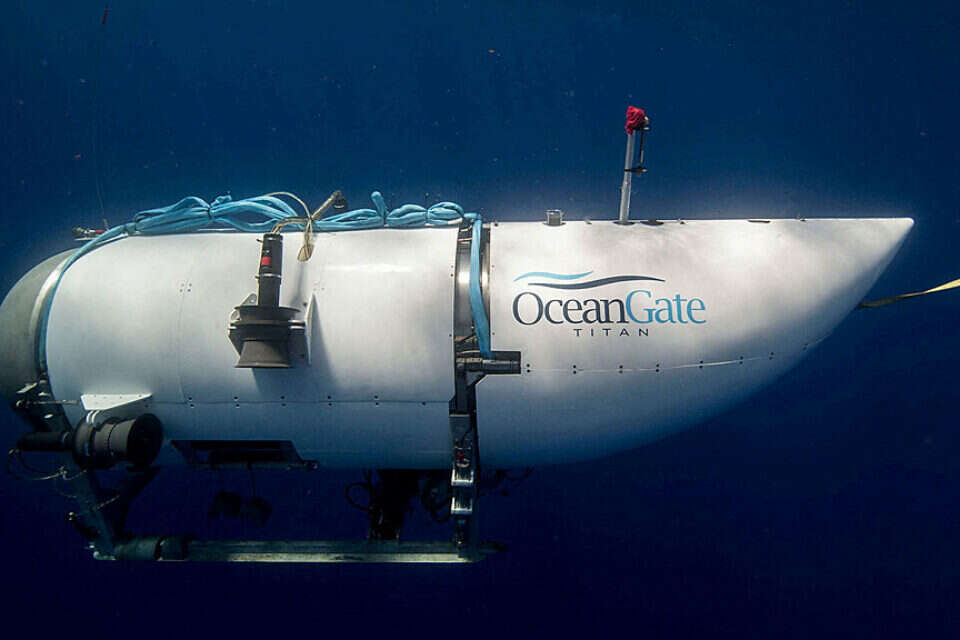If the five people inside the submarine Titan are still alive, you can't even imagine the nightmare they're going through: locked in the depths, darkness around them, in a dysfunctional capsule, assuming and hoping to be searched, but knowing only one thing for sure – oxygen quickly runs out. Today (Thursday) towards noon it is also supposed to end for good - so in the extensive searches in the disaster area, every second can be a matter of life and death.
On Tuesday and yesterday, a Canadian plane participating in the search received "noises" from the scene, where the wreckage of the Titanic was found, and the U.S. Coast Guard said that allowed the search to be focused. On the morning of the fourth day of drama - here are key questions and answers.
The five passengers in the capsule (top right, clockwise): Rush, father and son Dowd, Narjola and Harding, photo: AFP
In essence, what's the story?
On Sunday morning, the submarine Titan began its descent towards the wreckage of the Titanic. The descent to the ocean floor had to take two hours. After an hour and 45 minutes, at a depth of 3,500 meters, contact with the submarine, which was carrying five people, was lost: Pakistani businessman Shahzadeh Dawood and his son Suleiman; British adventurer Hamish Harding; Titanic explorer Paul-Henri Narjolais; and Stockton Rush, CEO of Oceangate, the submarine's operator. Titan had enough oxygen for 96 hours. Today oxygen is expected to run out.
The Titanic at the bottom of the ocean. At a depth of 3,900 meters, photo: AP
What happened to Titan?
That's the question of questions. The most prominent scenarios raised so far are system failure, fire, hermetic loss and entanglement in the bottom.
A system failure should not have prevented the buoyancy mechanism from working: the Titan had to release the cargo, rise to sea level and make contact with the mother ship. If the autonomous communication system also failed, the submarine should have at least floated. In a fire scenario, the fire would quickly deplete the oxygen in the vessel. In a scenario of failure to withstand the enormous pressure of the water at this depth, its penetration into the vessel would have been equivalent to an explosion, but the event would have been recorded by military hydrophones (underwater listening devices).
A final scenario is that the Titan becomes entangled in an object – like an old fishing net – or even gets stuck in the skeleton of the Titanic itself, even though the dive is designed so that contact with the ground is some distance from the shipwreck.
Have there been any glitches on Titan before?
Yes, one of the dives last year had a problem with one of the batteries. Another issue raised is that the hull of the submarine between its two domes is built of carbon fiber, while such vessels are usually made entirely of titanium or steel - tested materials for withstanding pressure in the depths. Some reports even claimed that the Titan lacked an automatic system for sending acoustic transmitters ("ping").
Also, in 2018, underwater researchers, oceanographers and industry executives warned that the experimental approach of Oceangate's CEO, who is abandoning conventional testing protocols, carries catastrophic dangers.
A Canadian Air Force man prepares a sonar buoy for throwing into the ocean, Photo: Reuters
What's next?
The search is being conducted vigorously with the participation of ships, aircraft, passive detection buoys (which only listen to the ocean) and active (sonars, which send signals to the bottom) and an underwater robot.
View of the scene from a Canadian Air Force plane participating in the search, photo: Reuters
If and when the submarine is found, a ship with appropriate equipment for lifting it must be found nearby - a matter that in itself will take a few hours. After it is put on board, it will be necessary to unscrew the screw with which the five men of the submarine were closed for the journey to the depths. Time is working against them.
Wrong? We'll fix it! If you find a mistake in the article, please share with us

